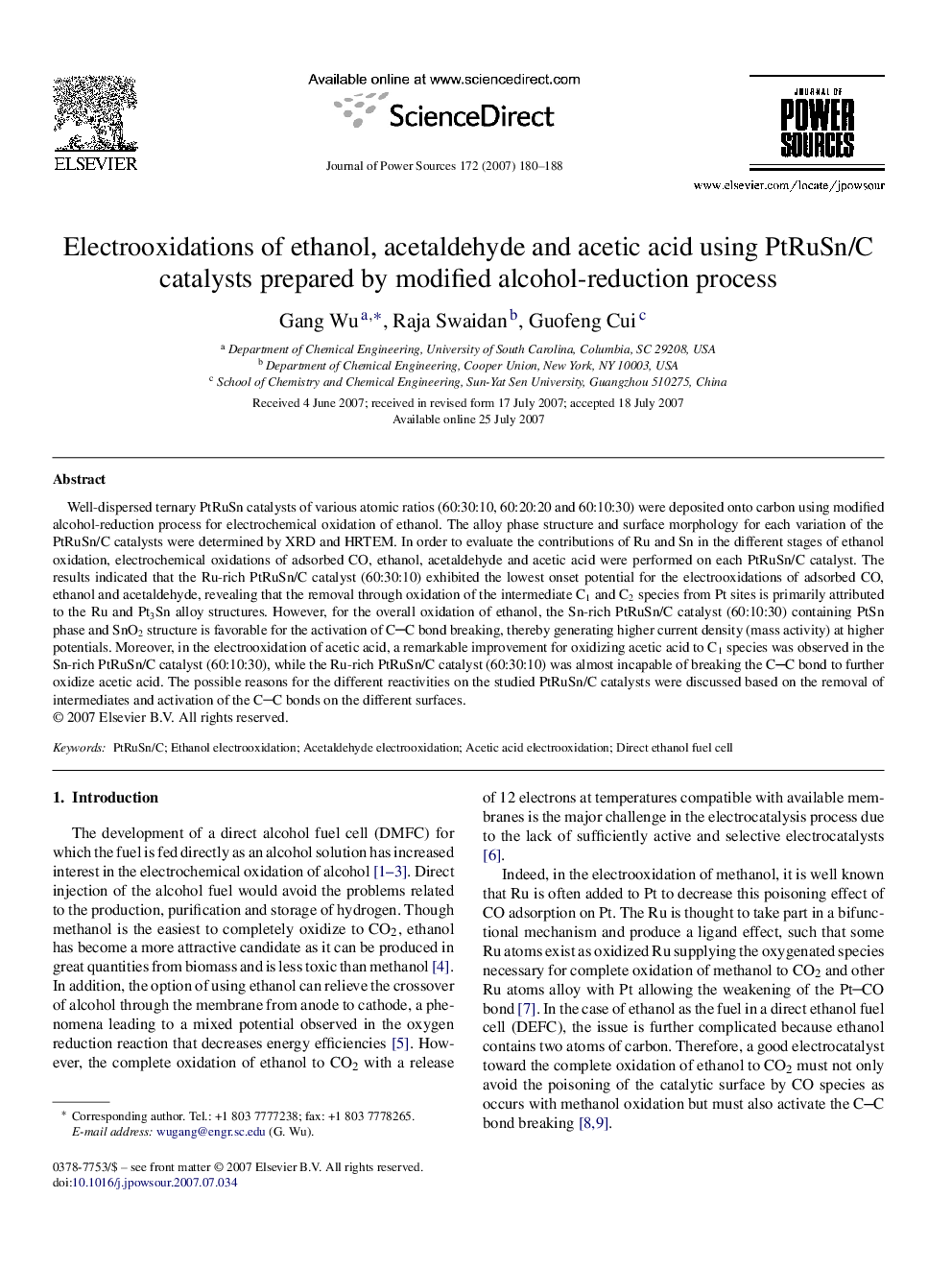| Article ID | Journal | Published Year | Pages | File Type |
|---|---|---|---|---|
| 1291642 | Journal of Power Sources | 2007 | 9 Pages |
Well-dispersed ternary PtRuSn catalysts of various atomic ratios (60:30:10, 60:20:20 and 60:10:30) were deposited onto carbon using modified alcohol-reduction process for electrochemical oxidation of ethanol. The alloy phase structure and surface morphology for each variation of the PtRuSn/C catalysts were determined by XRD and HRTEM. In order to evaluate the contributions of Ru and Sn in the different stages of ethanol oxidation, electrochemical oxidations of adsorbed CO, ethanol, acetaldehyde and acetic acid were performed on each PtRuSn/C catalyst. The results indicated that the Ru-rich PtRuSn/C catalyst (60:30:10) exhibited the lowest onset potential for the electrooxidations of adsorbed CO, ethanol and acetaldehyde, revealing that the removal through oxidation of the intermediate C1 and C2 species from Pt sites is primarily attributed to the Ru and Pt3Sn alloy structures. However, for the overall oxidation of ethanol, the Sn-rich PtRuSn/C catalyst (60:10:30) containing PtSn phase and SnO2 structure is favorable for the activation of CC bond breaking, thereby generating higher current density (mass activity) at higher potentials. Moreover, in the electrooxidation of acetic acid, a remarkable improvement for oxidizing acetic acid to C1 species was observed in the Sn-rich PtRuSn/C catalyst (60:10:30), while the Ru-rich PtRuSn/C catalyst (60:30:10) was almost incapable of breaking the CC bond to further oxidize acetic acid. The possible reasons for the different reactivities on the studied PtRuSn/C catalysts were discussed based on the removal of intermediates and activation of the CC bonds on the different surfaces.
